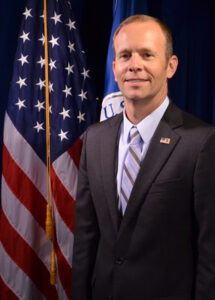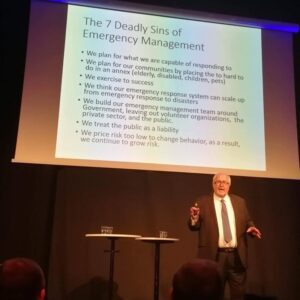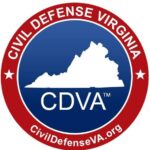What Is Civil Defense? What Is Civil Defense Virginia?
Guest Post:
By Preston Le Roy Schleinkofer
Introduction to Civil Defense
and Civil Defense Virginia
Ever since the demise of the U.S. Civil Defense Administration in the 1990’s, the community has been largely excluded from the process of emergency management. But since the terrorist attacks of September 11, 2001, and the increasingly serious threats to the U.S. from both state actors and non-state actors, there has been a growing call for the resurrection of some form of civil defense structure in the United States.
Among those calling for this resurrection was a bi-partisan group in the U.S. House of Representatives. In August of 2012 two Republicans and two Democrats introduced House Resolution 762: “Expressing the sense of the House of Representatives regarding community-based civil defense and power generation.” Even though the resolution never made it out of committee to see a vote, the sense of the Congress is still important. This bi-partisan group believed that a community-based civil defense program is a good idea for the modern community.
Proposed House Resolution 762:
- Encourages every community to develop its own “civil defense program” working with citizens, leaders, and institutions, ranging from local fire halls, schools, and faith-based organizations, to create sustainable local infrastructure and planning capacity, so that it might mitigate high-impact scenarios and be better prepared to survive and recover from these worst-case disaster scenarios and be better able to affordably and sustainably meet the needs of the community in times of peace and tranquility;
- Encourages every citizen to develop an individual emergency plan to prepare for the absence of government assistance for extended periods;
- Encourages each local community to foster the capability of providing at least 20 percent of its own critical needs, such as local power generation, food, and water, while protecting local infrastructure whenever possible from the threats that threaten centralized infrastructure; and to do so with the urgency and importance inherent in an all-of-nation civil defense program developed by citizens and their local communities; and
- Encourages state governments and federal agencies to support the ability of local communities to become stronger, self-reliant, and better able to assist neighboring communities in times of great need.

FEMA Administrator Brock Long told a Congressional subcommittee in November 2017, “let’s hit the reset button” and “the nation needs to stop and take a deep breath and figure out how we can become more resilient.” He also said “I’m ready to change the face of emergency management and how we tackle resiliency.”
Most recently in an interview with EM Weekly, Administrator Long said:
“One thing I have been very vocal about is we’ve got to stop looking at citizens as liabilities and start looking at citizens as the true first responders. How are we training them to take actions that are low to no cost actions they can take to be better prepared? How are we actually going back to the old civil defense in the 1950s of incorporating them into our activities and response plans like basically putting CERT teams on steroids and teaching citizens practical skills?”
The answer to Administrator Long’s dilemma is in Resolution 762 – a local community civil defense organization. This is the answer FEMA has been looking for. By organizing and training the citizens in planning, preparedness, rescue and recovery, the community is more resilient, and the nation as a whole is stronger when each community takes the responsibility for themselves and their neighbors. The many heroes in Houston, Texas after Hurricane Harvey in 2017 is a perfect example. That was the spirit of continuity of community (civil defense) in action.
On January 18, 2018, Time magazine online published an article entitled “Hawaii’s False Alarm Exposes U.S. Civil Defense Gaps.” The article points out that civil defense programs are designed to limit panic in the population. But, as we saw, the false alarm created a lot of panic and exposed the vulnerable underbelly of our current emergency management programs and true lack of any continuity of community.
We must do better.
What is civil defense?
There isn’t a modern definition of “civil defense” and for many, the term harkens back to the cold war era. This is the definition that Civil Defense Virginia has created and uses:
Civil Defense is the system of civilians and civilian government authorities within cities and counties partnering in protective measures and emergency relief activities conducted by community members for their own safety and protection in case of severe natural or man-made disasters, including:
a. protecting families, neighborhoods and communities,
b. training members in disaster preparedness, response and recovery measures,
c. maintaining Continuity of Community by preserving safety, security and constitutional governmental functions and, restoration and protection of critical infrastructure.
What is Civil Defense Virginia
Civil Defense Virginia (CDVA) is a 501(c)(3) tax-exempt education and training organization leading in civil defense thought and application. CDVA assists jurisdictions in developing their community-based civil defense organization. We can assist in developing the structure and organization for an effective community response to natural and man-made disasters. We can help tie the local emergency management plan to the residents of the community through a 501(c)(3) tax-exempt community organization or a coalition of organizations dedicated to building continuity of community. Whether there is one organization or a coalition of organizations participating, there should be a lead civil defense organization named for that jurisdiction.
The exact structure of the organization may differ somewhat between jurisdictions as they each will have different requirements, resources and challenges. In one model, the civil defense organization’s board of directors can reserve a permanent position for the emergency manager and possibly one other official from the jurisdiction (a County Supervisor, City Councilman, the Administrator’s office, Police department /Sheriff’s office, etc.). The board should have enough members (six to eight members) to insure a balance of members between the jurisdiction and its citizens for true collaboration.
There should be a leadership council to assist the board with the overall management of the CD organization. Most jurisdictions are divided into various political subdivisions, for which there are councilmen or supervisors, etc., that represent the citizens of their subdivision. The council will have representatives from each of the subdivisions (or districts). For example: Spotsylvania County Virginia is divided into 7 separate districts, each with supervisory representation. The leadership council of the “Spotsylvania County Civil Defense Association” should have a member representing each of the seven districts. Each district will in turn have a leadership contingent that actually works to build the continuity of community within their communities.
The key point is that, however it is structured, a non-profit civil defense organization in your town can provide solutions and resources in the event of an emergency – solutions and resources that you do not currently have in your budget. A non-profit civil defense organization is a resource multiplier for your community.
How can emergency managers prepare for civil defense?
Local emergency managers and their staff have a tough job in today’s environment. There are a number of potential threats, and some of the most devastating haven’t been considered or exercised – such as the local effects of a long-term national outage of the electric grid. If our cities and counties started planning and exercising for the worst-case scenarios, then we would have a better idea of how to prepare our jurisdictions and our citizens for them.

Former FEMA Administrator Craig Fugate talks about what he calls “The Seven Deadly Sins of Emergency Management.” One of these is the common belief in the emergency management profession that “we think our emergency response system can scale up from emergency response to disasters.”
Unfortunately, as Mr. Fugate notes, this may not be how it works.
I am sure that most emergency managers have studied the man-made and natural threats for their geographical area and also consulted the state and federal lists to see what is advised for their plans. The problem is that most don’t include the worse-case scenarios in their list of threats.
The emergency management team needs to do a thorough analysis of all-hazards threats, to include high-impact, low-frequency (HILF) events like an electromagnetic pulse (EMP), coronal mass ejection (CME), cyber and physical attacks on the power grid that disables it for extended periods without state, federal or local mutual aid. Large multi-regional blackouts and entire nation blackout from these threats lasting months to years must be exercised in order to fully understand what such a threat could and would present to the community.
Without doing this we fail to see the reality of the threats. In fact, we commit another one of the 7 Deadly Sins by former Administrator Fugate: “we exercise to success.” We must not be afraid to “exercise to failure,” and then go further into the abyss to discover what we don’t know and how to prepare for it. We also should not worry about being politically correct in our assessment and response to the threat. We must organize and prepare for the true threats, no matter how dire they may be. Once that is accomplished, then all other threats are scalable downward. You cannot scale up to a point you have never known, but once you know the worst-case disaster (total national grid-down for 12-24 months with no outside assistance), then you can scale up or down to any point that is required to meet any threat.
There is a lot that can be done to mitigate the effects of disasters, including long-term cataclysmic disasters that could affect the community, region and nation. The answer lies in the citizens of the community partnering with their local government to work together on the answers. To do this, the jurisdiction would have to properly inform the community of the threats, why they should be concerned and what needs to be done to mitigate the threats, especially possible worse-case scenarios. The limitations of our budgets means we can only do so much with existing resources. The key is leveraging resources by participation of the citizenry. It can and must be done! The emergency management process needs a Civil Defense component as this is the way to focus on organizing the citizens to help themselves and their neighbors – and communities – during emergencies. This is a community-based approach, rather than a top-down, government controlled process that is limited by budgets and government manpower.
In future posts we will look more at ways the CD organization can be formed and their duties. We will also provide a reading list and websites that are helpful. One organization I will highly recommend here is InfraGard, especially their Electromagnetic Pulse Special Interest Group (EMP-SIG). Checkout their website and consider joining the chapter in your area.
For more information on Civil Defense Virginia, click here.
For the book on how to start a civil defense organization, click here.
For InfraGard’s book with table top exercises for a grid-down event, click here.
 Preston Le Roy Schleinkofer is a retired federal law enforcement officer who served 27 years in the U.S. Border Patrol and Immigration and Customs Enforcement (ICE). He is also a retired Army senior non-commissioned officer (NCO) with 22 years in the Army, Army Reserve and National Guard. He is the founding president of Civil Defense Virginia, a tax-exempt 501(c)(3) organization, a member of InfraGard and an affiliate of the Secure The Grid Coalition. You can connect with him on LinkedIn, Facebook and Twitter.
Preston Le Roy Schleinkofer is a retired federal law enforcement officer who served 27 years in the U.S. Border Patrol and Immigration and Customs Enforcement (ICE). He is also a retired Army senior non-commissioned officer (NCO) with 22 years in the Army, Army Reserve and National Guard. He is the founding president of Civil Defense Virginia, a tax-exempt 501(c)(3) organization, a member of InfraGard and an affiliate of the Secure The Grid Coalition. You can connect with him on LinkedIn, Facebook and Twitter.

